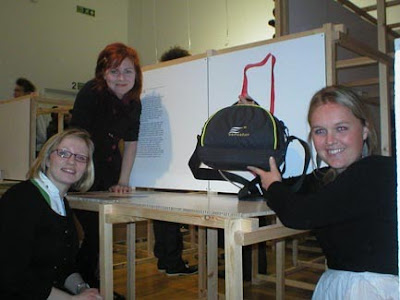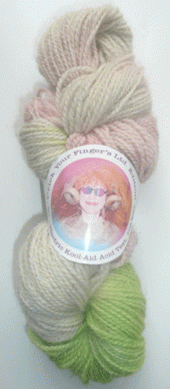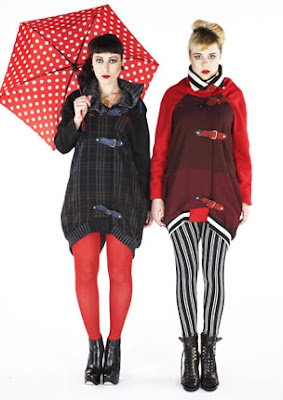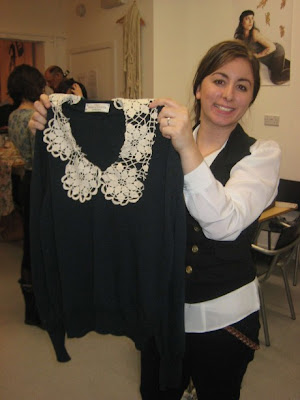Can craft be a tool for achieving sustainability in your creative work? And
just how crafty do you need to be to make a success of it?
'Cyndi Rhoades, multi-award-winning social entrepreneur who's refashioning
approaches to textile waste and ethical clothing, Lizzie Harrison, whose
ReMade project is upskilling a community of women and producing a recycled
clothing brand and Sophie Thomas, co-founder of the UK's leading sustainable
graphic design studio and passionate advocate for sustainable materials use,
apply their collective design skills to unpicking how rethinking materials
use and traditional skills can help us to create a more sustainable approach
to making.'
Last night I attended the final lecture in the Royal College of Art's sustainability themed talks. The lecture was of particular interest due to our current project which involves creating a garment with sustainability in mind. In a fashion and textiles capacity am a strong believer in the need to look back at traditional craft and skills to inform our practice as designers. All of the speakers were designers who have chosen to approach designing in an alternative way to the majority. Instead of producing more, they utilize what we already have.
Two main points of interest that I picked up on during the evening were-
- The importance of not mixing different materials as this makes them so difficult to return to their original elements and therefore are nigh on impossible to recycle.
-The idea that a designer can offer a service. A few of the speakers spoke about the importance of traditional craft in their work to create consumer goods. But as well as offering these goods, the idea of teaching people to create these goods themselves is of equal importance.

I was particularly struck by the simple yet highly effective Kitigunia chair-bag by Dejan Mitrovic, a recent RCA graduate. When set the brief by the RCA to design a chair, Dejan was overwhelmed by the amount of chairs already in production in the west. He therefore decided to design for a country that did not have any chairs already, Uganda. His design is simple, lightweight, portable and extremely useful. He chose to use materials that would be in abundance in this African country- bamboo, coffee sacks and straw and has created a simple image only manual so that the people of Uganda can construct these chairs themselves.
Cyndi Rhoades' fashion brand 'Worn Again' has corporate partnership at its core. The company primarily works with recycling old uniforms which on average are worn for 18 months before being sent to landfill. This common phenomena within corporate ware creates extremely large quantities of waste and poses a real issue to tackle. 'Worn Again' transforms the old uniforms, e.g. old Royal Mail storm jackets into desirable consumer goods. Cyndi's aim is also to instigate the idea of 'Corporate buy back'. This is the idea of making products out of a company's waste which is of need to them. An example of this is her work with Eurostar. She asked the company which product they were looking to buy for their staff. The company were searching for specialist bags for ticket issuing staff with many compartments etc. So 'Worn Again' set about designing and creating these ticket bags out of old, waste Eurostar uniforms. In simple terms, they want to work towards the idea of closed loop supply chains.

Lizzie Harrison, another speaker has established a recycled fashion company, Antiform and also 'Remade in Leeds', a community project which draws on local skills and resources to create innovative fashion for her Antiform seasonal collections.
During her talk, she mentioned two brands of interest-
1. Droog.

Droog, Rag Chair.
'This chair is layered from the contents of 15 bags of rags. It arrives ready made but the user has the option to recycle its own discarded clothes to be included in the design. Each piece is unique; a treasure-chest of memories.'
This design company has extraordinarily innovative and original approaches to sustainable design.
2. Prick your Finger.
Based in Bethnal Green, Prick your Finger offers sustainable, UK produced yarns but also knitting, spinning and crochet classes.

Prick Your Finger Electric kool-Aid Acid Test DK yarn
'A 100% Swaledale yarn In DK weight designed by Prick Your Finger and spun by Roger at one of the small mills still operating in the uk. Its dip-dyed by us using Kool-Aid the fruit drink!'
Antiform uses waste fabric sourced from scrapstores, depots, factories, millstores etc. Some fabrics are overorders, leftovers (an insufficient quantity to create another print run) or test strips. An interesting example of this are the winter's coats which are made from the test strip material of a tweed fabric company. This explains the changing gradation of colour which gives each coast its own unique twist.

She also approached a tannery which had a whole store room of leather swatches no longer used. Lizzie used these swatches to create hand crafted belt buckles. Despite there being a phenomenal amount of post-consumer waste, Lizzie draws our attention to the fact that 50% of the materials she uses are pre-consumer waste from industry.
An important part of the designing process of Antiform is the involvement of the local community. Lizzie scoured womens' clubs (W.I.'s, Embroiderers Guilds, Asian community clubs) and found a whole wealth of ladies with an incredible set of traditional skills. Combining local manufacturing and resources (all materials are sourced within 20 miles), traditional skills and a strong co-design ethic has shown the extent to which craft can intercept fashion.
Lizzie quoted an example of clever adaption of the old into a new desirable garment. She visited a hospice shop and asked the ladies volunteering there what they could not get rid of. The shop had a whole pile of jumpers with a customary cup of tea stain down the front! In addition, they had sack fulls of crochet doilies. The ladies were so upset that no one wanted to buy the old doilies despite the hours of love, attention and exquisite detail that had been put into them. To solve two issues in one, Lizzie decided to customize the jumpers by adding the lace doilies onto the front. It may sound like an extremely crude and botched together idea, but sometimes, simplicity really is best and the jumpers are really subtle yet beautiful.

Antiform also offers classes and workshops so that the community can customize and give new life to their old garments. Truly inspirational!
The final speaker, Sophie Thomas was extremely environmentally conscious and challenged ones perception of the role a designer should play. In our theory lectures we have recently been investigating the modern consumer driven society and its harmful repercussions. Sophie is a strong anti-consumerism campaigner. In order to promote 'Buy nothing day' she worked in collaboration to create a pop up shop, the 'No Shop' which was essentially not a shop at all but an empty space.

She told us about one of her most prized possessions, a Citizens Advice Notes book given to her from her mother. Written at the height of rationing in 1942, what she found particularly interesting was the section on Salvage. It was illegal to dispose of numerous materials and goods such as rags, rope, paper etc due to a lack of resources and imports and people were encouraged to be imaginative with a 'make do and mend' attitude. Today's generation could not be more different with throw-away goods dominating our lives.
The toothbrush was used as a fantastic example of our flawed consumer goods. A simple, common toothbrush is made up of around 5 different types of plastic, making it impossible to recycle. It is recommended that we dispose of out toothbrush every 3 months, despite the toothbrush having a lifespan of around 200 years. Here, the words of Kate Krebs, Executive Director of the National Recycling Coalition really ressonate-
"Waste is really a design flaw".
A huge amount of our waste plastic ends up in the Pacific Ocean in a soup of waste known as the Pacific Garbage Patch. 100 meters deep and twice the surface area of Texas. Shockingly, the plastic, plancton ratio here is 6:1! The sheer sight of this converted wildlife camerawoman, Rebecca Hosking into an avid environmental campaigner.

"Hosking was on a beach on Midway island, a remote Hawaiian atoll. But instead of finding some pre-lapsarian wilderness, she and a colleague were confronted with the horror of hundreds of albatrosses lying on the sand.
The great birds' stomachs had been split open by the heat, and bits of plastic were spewing out between the feathers and the bones. All kinds of plastic - toys, shopping bags, asthma inhalers, pens, cigarette lighters, toothbrushes, combs, bottle tops. The birds had swallowed them and choked to death.
It got worse. There were humpback whales, seals and turtles - all dead or dying from the plastic. Wherever they went the sea was full of tiny pieces of plastic and every tide brought more. On the leeward side of Midway they found thousands of albatross chicks dead or fatally weakened. Hosking picked up one still alive. It pecked her and then died too. At that, Hosking broke down in anger and distress. Most people would have left it there, but Hosking proved as tough as the bits of old toothbrush she saw. She went home to Modbury, the south Devon town where she was born and has always lived. She finished the film for the BBC. Then she set about banning plastic bags. Just like that. " Guardian online.
This photograph shows plastic found in the stomach from the carcass of a Laysan Albatross fledgling.


As designers, we must recognize our role in the creation of this waste and search for ways to prevent contributing to the situation. This talk has given me so much to think about and will make me question my whole approach to designing.





